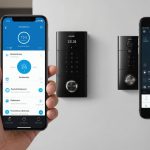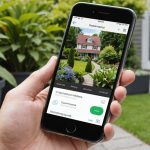In today’s increasingly connected world, using smartphones to manage smart home appliances has become commonplace. From controlling lights and thermostats to monitoring security systems and kitchen appliances, smartphones offer unparalleled convenience and efficiency. This comprehensive guide will delve into the best practices for leveraging your smartphone to manage your smart home, drawing from expert tips and user experiences. By the end of this article, you’ll be well-equipped with actionable insights to optimize your smart home management.
Understanding Smart Home Ecosystems
Before diving into the specifics, it’s essential to understand the ecosystem of smart home devices and how they interact with smartphones. Smart home ecosystems are interconnected networks of devices that can communicate with each other and be controlled remotely.
Have you seen this : How to Use Your Smartphone to Create a Smart Home Garden Monitoring System?
Smart home appliances typically connect to a central smart home hub or directly to your smartphone via Wi-Fi or Bluetooth. These devices can include lights, thermostats, cameras, locks, and even kitchen appliances like ovens and refrigerators. The smartphone serves as a universal remote control, allowing you to manage these devices through dedicated apps.
When setting up a smart home ecosystem, compatibility is crucial. Ensure that the devices you purchase are compatible with your smartphone’s operating system—be it iOS or Android. Moreover, consider the possibility of integrating voice assistants like Amazon Alexa, Google Assistant, or Apple HomeKit for added convenience.
Have you seen this : What Are the Steps to Set Up a Smart Home Surveillance System Using Your Smartphone?
Understanding the basics of your smart home ecosystem can simplify the management process and make your home more responsive to your needs. By familiarizing yourselves with how these devices communicate and integrate, you can ensure a seamless and efficient smart home experience.
Essential Apps and Tools for Smart Home Management
With the overwhelming number of smart home devices available, selecting the right apps and tools to manage them can be daunting. However, employing the right software can significantly enhance your user experience and streamline operations.
The first step is to download the manufacturer’s app for each of your smart devices. These proprietary apps offer comprehensive control and customization options. For instance, if you own a Nest Thermostat, the Google Home app will be your go-to solution for managing your thermostat settings.
Another essential tool is a unified smart home app that consolidates control of all your devices. Applications like SmartThings, Home Assistant, and Apple HomeKit allow you to manage different brands and categories of smart home appliances from a singular platform. This centralized control can save time and reduce the hassle of switching between multiple apps.
Additionally, consider using automation tools like IFTTT (If This Then That) to create custom routines and scenarios. For example, you can set a routine that automatically turns off your lights and locks your doors when you leave the house. These automation tools can make your home more intelligent, responsive, and efficient.
Don’t forget about security. Ensure that all apps and tools you use are up-to-date and come from reputable sources. Employ robust passwords and consider using two-factor authentication for added security.
Optimizing Smart Home Security Measures
While convenience is a significant advantage of smart home technology, security should never be compromised. Managing your smart home appliances through your smartphone exposes your home to potential cyber threats. Therefore, implementing stringent security measures is paramount.
Firstly, secure your home Wi-Fi network. Use a strong, unique password and consider setting up a separate network for your smart devices. This can help contain any potential breaches and protect your primary network. Regularly update your router’s firmware to ensure it has the latest security patches.
Secondly, be vigilant about software and firmware updates for all your smart devices. Manufacturers frequently release updates that include important security enhancements. Failing to update your devices can leave them vulnerable to attacks.
Thirdly, utilize strong, unique passwords for all your smart home accounts. Avoid using easily guessable passwords like “password123” or “smart-home”. Password managers can help you generate and store complex passwords.
Another layer of security is enabling two-factor authentication (2FA) wherever possible. 2FA adds an additional verification step, making it harder for unauthorized users to access your devices.
Lastly, be cautious of the permissions you grant to smart home apps. Ensure that they only have access to the necessary information and functionalities. Regularly review and revoke unnecessary permissions to minimize risks.
Maintaining and Troubleshooting Smart Home Devices
Maintaining your smart home devices is crucial for long-term performance and reliability. Regular maintenance can prevent issues and ensure your devices function optimally. Here’s a guide to help you maintain and troubleshoot your smart home appliances efficiently.
Regularly cleaning your devices is the first step. Dust and debris can accumulate over time, affecting the performance of sensors and moving parts. Follow the manufacturer’s guidelines for cleaning and maintenance to avoid damaging your devices.
Next, monitor the performance of your devices. Many smart home apps provide usage statistics and performance logs. Regularly reviewing these can help you identify potential issues before they escalate. Look out for unusual activity or performance drops, and address them promptly.
When troubleshooting, start with the basics. Ensure that your devices are properly connected to your network and have a stable power supply. Restarting the device can often resolve minor issues. If the problem persists, refer to the user manual or the manufacturer’s support resources for guidance. Many manufacturers offer online troubleshooting guides, FAQs, and customer support contact information.
Another useful practice is keeping a log of issues and resolutions. This can help you identify recurring problems and patterns, making it easier to diagnose and resolve issues in the future.
Finally, stay informed about new features and updates. Manufacturers often release new functionalities and improvements through software updates. Keeping your devices updated ensures you can take advantage of these enhancements.
Future Trends in Smart Home Technology
As technology continues to evolve, the landscape of smart home appliances is set to undergo significant advancements. Staying informed about these future trends can help you make informed decisions and prepare for upcoming innovations.
One of the most anticipated trends is the integration of Artificial Intelligence (AI) and Machine Learning (ML) in smart home devices. AI can enable your devices to learn from your habits and preferences, offering more personalized and efficient control. For example, AI-powered thermostats can learn your schedule and adjust temperatures automatically, optimizing energy consumption.
Another emerging trend is the development of smart home ecosystems that communicate and collaborate seamlessly. Interoperability standards like Matter aim to break down the barriers between different brands and ecosystems, allowing devices to work together more efficiently. This can enhance your overall smart home experience by providing more cohesive and integrated control.
Sustainability is also becoming a key focus in smart home technology. Manufacturers are increasingly developing eco-friendly devices that reduce energy consumption and environmental impact. Smart meters, energy-efficient appliances, and renewable energy integration are some of the advancements to look forward to.
Voice control is expected to become more sophisticated and intuitive. Advances in Natural Language Processing (NLP) can make voice assistants more responsive and capable of understanding complex commands. This can further simplify the management of your smart home appliances.
Finally, augmented reality (AR) and virtual reality (VR) technologies are making their way into smart home management. AR and VR can provide immersive and interactive ways to control and monitor your devices. Imagine using AR glasses to visualize and control your smart home setup in real-time.
In conclusion, using smartphones to manage smart home appliances offers a myriad of benefits, from convenience and efficiency to enhanced security and customization. By understanding your smart home ecosystem, utilizing essential apps and tools, optimizing security measures, maintaining your devices, and staying informed about future trends, you can maximize the potential of your smart home.
As technology continues to advance, the possibilities for smart home management are bound to expand, offering even more innovative and intelligent solutions. By following the best practices highlighted in this article, you can ensure a seamless, secure, and efficient smart home experience. Embrace the future of smart home technology and take control of your home with confidence.











